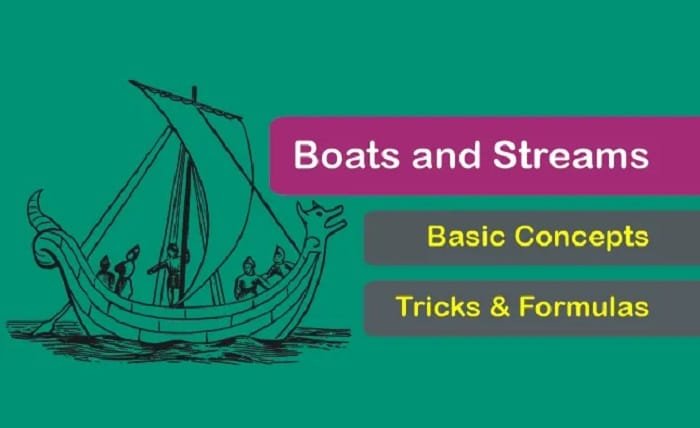Aptitude tests present candidates with various mathematical challenges. These include Boats and Streams problems involving the relative motion of boats and water currents. Mastering the approach to these questions is crucial for success in competitive exams. So, this article will shed light on effective strategies for tackling Boats and Streams questions, empowering you with the skills required to navigate aptitude tests confidently.
Understanding Boat and Stream Problems
Knowing the fundamentals of these problems is important before getting into the strategies. These problems typically involve calculating the speed of a boat or a swimmer in still water, given the speed of the stream or river and the time taken to cover a certain distance. The key concept to remember is that when a boat moves upstream (against the current), its effective speed decreases, while moving downstream (with the current) increases its effective speed.
Strategy 1: Establishing a Frame of Reference
Establishing a frame of reference is the foundation for precisely tackling Boats and Streams questions. Start by discerning the direction of the stream – whether it flows upstream or downstream. Assign variables to represent the velocities of the boat and the stream, providing a structured approach to formulate equations grounded in the relative motion of the boat and the water. Techniques such as visualizing the scenario using diagrams or charts can aid in comprehending the relationship between the boat, the stream, and their motion, facilitating a clearer understanding of the problem at hand. By establishing a solid frame of reference, candidates can navigate these types of problems methodically and enhance their problem-solving prowess.
Strategy 2: Utilizing Relative Speed Concept
The relative speed concept serves as a cornerstone in resolving boat and stream problems, offering invaluable insights for efficient problem-solving. When the boat and the stream move congruently, their speeds amalgamate, propelling downstream motion. Conversely, when their paths diverge, their speeds contrast, inducing upstream motion. By harnessing this principle, complexities inherent in such problems can be simplified into manageable equations, expediting the solution process while enhancing accuracy. Techniques like considering the boat’s and the stream’s combined speed in the same direction or subtracting their speeds in opposite directions further refine the application of the relative speed concept, empowering candidates to confidently approach these types of problems.
Strategy 3: Employing Time and Distance Relationships
These questions often require mastery of time and distance relationships, which are pivotal for efficient problem-solving—understanding how time, distance, and speed interplay is crucial in approaching these questions effectively. Whether deducing the time required to traverse a given distance or calculating the distance covered within a specified time frame, clarity in formulating equations based on these relationships is paramount. Candidates can confidently streamline their problem-solving process and navigate these types of questions by employing techniques such as the distance = speed × time formula or utilizing concepts like relative speed.
Strategy 4: Practice and Familiarization
Practice is essential for success in aptitude tests. Acquaint yourself with various boat and stream question types, spanning from simple to intricate scenarios. Focus on Speed and Accuracy: Bank exams impose time constraints, necessitating both precision and efficiency in calculations. Employ mental math strategies to expedite computations and maintain consistency in units throughout problem-solving. Through consistent practice, you’ll hone your problem-solving skills and cultivate an intuitive approach to these questions, enhancing your exam performance.
Mastering Boats and Streams questions is essential for success in aptitude tests. Meanwhile, remember to establish a frame of reference, utilize the relative speed concept, leverage time and distance relationships, and dedicate time to regular practice. With these skills in your arsenal, you’ll be well-equipped to ride the waves of aptitude tests and tackle these types of problems with ease.





